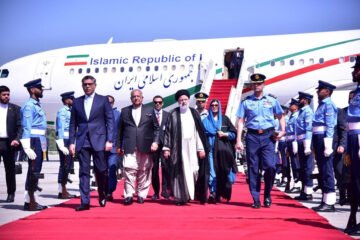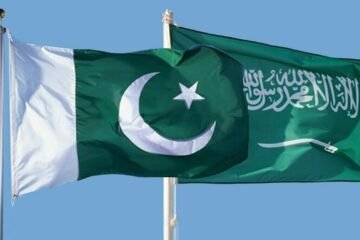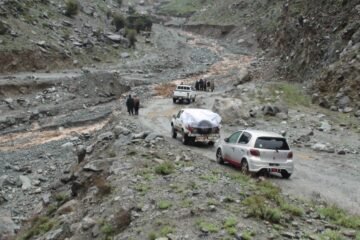Kashmir: Amritsar Treaty, Location & Self-Determination

Kashmir which is the northwestern part of the Indian subcontinent is a valley historically, located between the Himalayas and the Pir Panjal mountain range.
Today, Kashmir is considered to be a large area, including the Kashmir valley, Jammu, and Ladakh. Pakistani-controlled Kashmir includes Gilgit and Baltistan. Although, before 1846, these were independent states but became part of Kashmir when Pakistan was formed. The Kashmir Valley is a land fertile with rivers at the foot of the mountains. It is considered a paradise on Earth because of its natural beauty.
The region is currently divided into three countries due to conflicts: Pakistan Northwest Territories (Northern Territories and Azad Kashmir), India Central and Western Territories (Jammu and Kashmir and Ladakh), and China North East (Sky Chen and Upper Karakoram Region). India is located on all the high mountains including Siachen Glacier while Pakistan is located on the relatively low mountains.
Kashmir is the main cause of the dispute between Pakistan and India and the only solution to this dispute is to recognize the right of the Kashmiri people to self-determination in the context of UN resolutions. Both Pakistan and India are nuclear powers that view Kashmir’s independence and sovereignty as one of the most dangerous regional conflicts in the world.
Additionally, the two countries have fought three wars over Kashmir:
- The 1947 war
- The 1965 war
- The 1999 Kargil war
The 1971 war was fought over Bengal.
On March 16, 1846, the British sold Kashmir to Gulab Singh Dogra under the Amritsar Treaty whose son Zanbir Singh, succeeded him. Followed by Pratap Singh as a successor. A childless, opium addict who was eager to play cricket.
In turn, Pratap Singh was succeeded by Hari Singh son of Amar Singh, by conspiracy. Hakim Noor Din, who was Mirza Qadiani’s right-hand man and official sage, was at the forefront of this conspiracy which laid down the basis of the first victory of the Qadiani conspiracy. Qadiani wanted a separate state in Kashmir.
Thereby, Hari Singh ascended the throne in 1925 with the support of the Qadianis and the oppression of Muslims began. In 1929, Sheikh Abdullah formed the Reading Room Organization and AR Sagar formed the Young Men’s Muslim Association.
In 1931, the first mosque was martyred in Reasi. Friday prayers were banned for the first time in Kotli. A Hindu constable desecrated the Qur’an. A Muslim named Abdul Qadir held unprecedented protest rallies. When he was arrested, the massacre of Muslims began. Kashmir Martyrs’ Day is celebrated on July 13 to commemorate the massacre. Thus, the independence movement of Kashmir started in 1931.
Consequently, the All India Kashmir Committee was formed on 25 July 1931 at a meeting at Fairview Manzil Shimla which was presided over by Qadiani Mirza Bashiruddin Mahmood. He was the son of Mirza Qadiani. This was again Qadiani’s victory. He conspired that all Muslims have accepted Qadiani as a prophet and therefore elected Mirza Bashir as president. Following this, all Muslims immediately resigned from the committee. It may be recalled that Allama Iqbal was also included in this committee.
Ataullah Shah Bukhari was immediately sent to Kashmir and with great difficulty, the Muslims got out of this conspiracy. Allama Iqbal became the patron of Majlis-e-Ahrar and foiled the conspiracy of Bashir Qadiani.
Moreover, Kashmir Day was celebrated for the first time on August 14, 1931. In October 1931, a Muslim delegation led by Allama Iqbal met Maharaja Hari Singh and his Prime Minister Hari Krishna Kohl for talks. Negotiations failed. From Sialkot to Kashmir, let’s go to Kashmir.
Thus, the independence movement started in 1931. Following which another contingent of Muslims left Jhelum for Mirpur. The third contingent consisted of thirty young men from Rawalpindi who swore on the Qur’an that the Kohala Bridge would remain closed. Then in November 1931, a commission was formed under the chairmanship of Sir BJ Glancy to deal with the situation of this war.
At present, India occupies the largest area of Kashmir, ie 101,387 sq km, while Pakistan occupies 85,846 sq km and China 37,555 sq km. Meanwhile, Azad Kashmir covers an area of 13,350 sq km (5,134 sq mi) with the Northern Areas covering an area of 72,496 sq km (27,991 sq mi) comprising of Gilgit and Baltistan. Before the partition of India, Baltistan was part of the province of Ladakh and its capital was Skardu, the capital of Ladakh.
Why the word PARCHI is a wrong concept
Question mark on FATF’s reputation & credibility!
Noor Mukadam murder case: Public demands justice
The write-up has been contributed by Sajawal Saleem. He can be reached at @Sajawal_13
Stay tuned to Baaghi TV for more. Download our app for the latest news, updates & interesting content!










